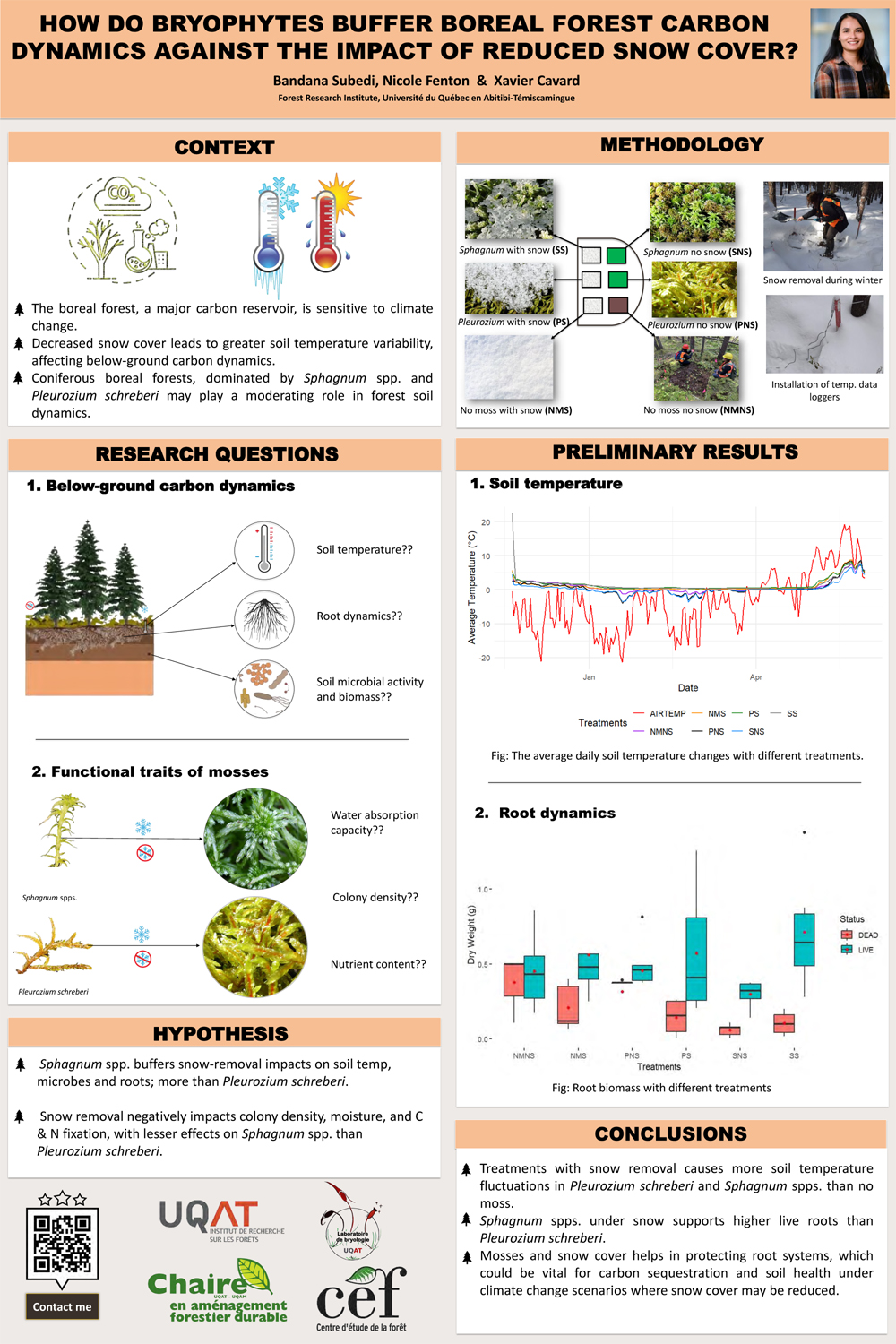
The boreal forest, the world’s second-largest forested biome, is a major global carbon reservoir. However, this vital ecosystem is undergoing significant changes, notably a reduction in insulating snow cover. This exposes the soil to greater temperature fluctuations and frequent freeze-thaw cycles, affecting below ground carbon processes like microbial biomass, root dynamics, and nutrient cycling. Boreal forests, dominated by mosses such as Sphagnum and Pleurozium species, along with black and white spruce, are particularly vulnerable to these changes. However, the role of mosses like Sphagnum and Pleurozium in moderating soil carbon dynamics in boreal forest remains unclear. Further research is needed to understand how temperature changes could impact moss’ ability to regulate forests soil carbon dynamics. To explore whether Sphagnum spp. and P. schreberi can buffer the effects of reduced snow cover on sub-surface temperature, microbial biomass, and root dynamics, we established 36 experimental plots (1.5 m* 1.5 m) across three mature black spruce sites in Nord-du-Quebec. Treatments included: Sphagnum spp. with snow, Sphagnum spp. without snow, Pleurozium schreberi with snow, Pleurozium schreberi without snow, no moss with snow, and no moss without snow, with six replicates per treatment. Soil temperature was monitored at a 15cm depth using data loggers and snow was removed manually with minimal disturbance to the mosses and soil in treatment plots. Soil samples were collected in late spring and summer to measure microbial biomass and root dynamics, with roots classified as live or dead and analyzed using WinRHIZO. Moss functional traits like water retention and colony density were also assessed. We predict that the Sphagnum will be associated with more stable soil temperatures, supporting higher microbial biomass, and root productivity compared to Pleurozium schreberi and no moss plots, under both snow-covered and snow-removed conditions. Moss functional traits are expected to show significant variations in response to reduced snow cover, with potential shifts in density, hydration traits, and nutrient cycling. These findings will enhance climate change models and support resilience-focused forest management strategies aimed at maintaining carbon sequestration as snow cover declines. Preliminary results from our study will be presented.
